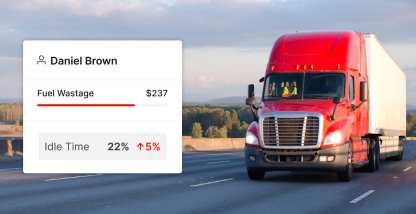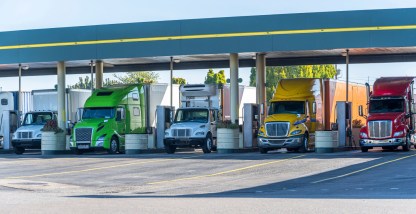U.S. companies lose billions of dollars each year to cargo theft. The FBI’s Uniform Crime Reporting (UCR) Program collects cargo theft data and reported in 2018 that less than 20 percent of stolen cargo is ever recovered. Industry experts estimate that losses due to cargo theft are around $30 billion per annum. The exact dollar losses aren’t known because many incidents go unreported. Many companies wish to avoid bad publicity and the resulting reputational damage.
When a theft occurs, it impacts everyone. Manufacturers and distributors lose money when goods are stolen, insurance rates go up, carriers are directly impacted, and so the end consumer pays more when products reach the stores.
Criminals are becoming increasingly sophisticated in their activities so protecting and securing loads is a growing challenge. The perpetrators are not just stealing high-value goods such as electronics and luxury items; they are also targeting clothing and beverages which are easily disposed of to unscrupulous buyers.
Meet the AI Omnicam, a side/rear/cargo camera for 360-degree visibility.
Strategic and opportunist theft
Strategic cargo theft is meticulously planned and uses refined methods to deceive the transporter into releasing the load into the hands of criminals. It is becoming increasingly prevalent.
A simple internet search can provide details of warehouse locations of desired products, the appointed carriers, and their customers’ regular destinations. From this, it is possible to identify weaknesses in their processes and possible soft targets.
Therefore, make sure to confirm the identity of drivers at loading time while you record the truck and trailer details.
According to the FBI, the high season for cargo theft is from Labor Day through Christmas. Friday loads are a specific risk. Carriers want to clear their dispatch areas for the weekend and their operations people may tend to take short cuts on checking documentation and driver details. A thief can impersonate the real driver by arriving early with a suitably acceptable vehicle and forged paperwork, all without causing concern.
Scott Cornell, an expert in cargo theft at Travelers Insurance says, “the fastest-growing category of strategic cargo theft is seeing thieves utilize sophisticated identity theft and other schemes toward posing as legitimate truckers to make off with freight.” Travelers’ Insurance has developed a sting trailer to demonstrate how to combat this fraud. It’s equipped with hidden cameras, tracking devices, hidden microphones and is being used to trap organized cargo theft rings operating in hot spots around the country.
Opportunist cargo theft is one that is unplanned and happens by chance. Anytime a truck is stationary, the cargo is at risk. Legally, drivers must take breaks which means loads are particularly vulnerable at truck stops. Ideally, loaded trucks and trailers should not be left unattended, but this is not always possible.
High-security remote-controlled locks are one method of prevention. The most effective defense against cargo theft, however, is an educated, alert and aware driver who is constantly aware of his surroundings.
Industries affected
According to the FBI, any product being shipped is potentially a target, but the computer/electronic components are current high-value favorites being re-sold on the black market. Serial numbers make many electronic products easy to trace, but their high value still makes them a prime target. Equipment for the home and industrial building materials are becoming increasingly common targets as well as food and beverages, which are easy to move, but difficult to trace.
On average, there are 63 incidents of cargo theft each month in the US, and these thefts occur most commonly in Florida, California, and Texas.
By the numbers
According to Sensitech’s second-quarter 2018 U.S. and Canada cargo theft analysis, 157 cargo thefts were reported in the period, slightly down from 2017. Most of them (74%) were full truckloads.
The average cargo value per theft event was $186,779. The thefts involved 342 stolen vehicles, including 120 semi-tractors and 155 semi-trailers. 26 percent of total thefts for the year were in California.
How to combat cargo theft—your 5-point checklist
Can you stop your freight from being targeted? No, but there are some best practices to apply to improve your freight’s security.
1. Driver training and coaching
Drivers are your first defense against cargo theft. Initially, make sure that your employees are properly screened to avoid any possibility of internal fraud or collusion with criminals.
- Keep drivers up-to-date on the latest trends in cargo theft so they are prepared for possible threats
- Make drivers aware of known information on hijacking hotspots and high-risk locations and improve fleet risk management.
- Brief drivers on the correct procedure on how to report incidents
To simplify driver training, use the Motive Driver Coaching feature. It allows you to mark events with four different statuses and leave notes.
2. Route planning
- Identify and communicate approved safe stops for refueling, meal breaks, and layovers.
- Define and use alternative driving routes to deter thieves
3. Pick-up and drop-off procedures
- Make sure that drivers are properly identified at pick-up
- Where staging of loads is necessary en-route, use pre-qualified locations or own company facilities, if possible
- Ensure drivers are clear on where and when to deliver their load and that they request and record identity documentation from the receiver.
4. Safety and security at vulnerable locations
- If a driver has to leave his/her load unattended, it should be in a well-lit area and ideally in a position where access to the load is impossible, e.g., against a wall.
- Use all available locking and theft prevention equipment. Security locks on the cargo should be checked when arriving and leaving each stop.
5. Using technology
Tracking devices
- Tracking devices can identify the exact location of a vehicle at any time. They can send alerts when there is a deviation from a set route, or it leaves a designated area
- Multiple GPS-based tracking devices must be used on trucks, trailers, and cabs. Criminals are increasingly using “sniffers” to identify them and “jamming devices” to block them.
With Motive, you can create geofences to receive instant notifications whenever a vehicle enters or exits an area when it shouldn’t. This may help with theft prevention. The email alerts will include the time, date, geofence category, geofence crossed, driver’s name and vehicle ID.
Cameras and video
- Take advantage of the latest technology in real-time remote monitoring of vehicles and loads using mobile devices
- Onboard cameras can record details of incidents from multiple viewpoints for use in insurance claims and police reports
- Video recording systems can monitor events as they occur and can be downloaded for later interrogations
If you are interested in dash cams, check out the Motive Smart Dashcam and learn more about the new safety features we just announced.
Final tip: Make it as easy as possible for drivers to communicate suspicious activity and immediate concerns to one point of contact in your company. It could be the difference between the loss of expensive cargo and a near miss.
Motive offers fleets the tools and technology to safeguard their assets, prevent theft, receive real-time alerts with geofencing, and an easy-to-use and safe messaging system to stay in touch and communicate with drivers.
For more information, call (844) 257-6396 or email at support@gomotive.com. Our 24/7 customer support team is always available to help you.









